Motor swaps enhance performance‚ efficiency‚ or drivetrain characteristics by replacing the factory engine with a more powerful or suitable alternative. Popular among Honda Civic enthusiasts‚ engine swaps like K-Series or B-Series upgrades offer improved power and VTEC capabilities‚ making them a cornerstone of Honda tuning culture.
1.1 What is a Motor Swap?
A motor swap involves replacing a vehicle’s factory engine with a different engine to improve performance‚ efficiency‚ or drivetrain characteristics. It is a popular modification among Honda Civic enthusiasts‚ allowing owners to upgrade to more powerful or modern engines‚ such as the K-Series or B-Series‚ while retaining the original vehicle’s chassis and body. This process requires careful planning and compatibility checks to ensure successful integration.
1.2 Benefits of a Motor Swap for Honda Civic
A motor swap for Honda Civic offers enhanced performance‚ improved fuel efficiency‚ and increased resale value. Upgrading to engines like K-Series or B-Series provides better power delivery and VTEC capabilities‚ making the car more responsive and fun to drive. Additionally‚ a swap can breathe new life into older models‚ modernizing their performance while retaining the iconic Civic design. It’s a cost-effective way to boost performance without buying a new vehicle.
Popular Engine Options for Honda Civic Swaps
Popular engine options for Honda Civic swaps include K-Series (K20‚ K24)‚ B-Series (B16‚ B18)‚ and D-Series (D16‚ D17) engines‚ known for their power‚ efficiency‚ and availability.
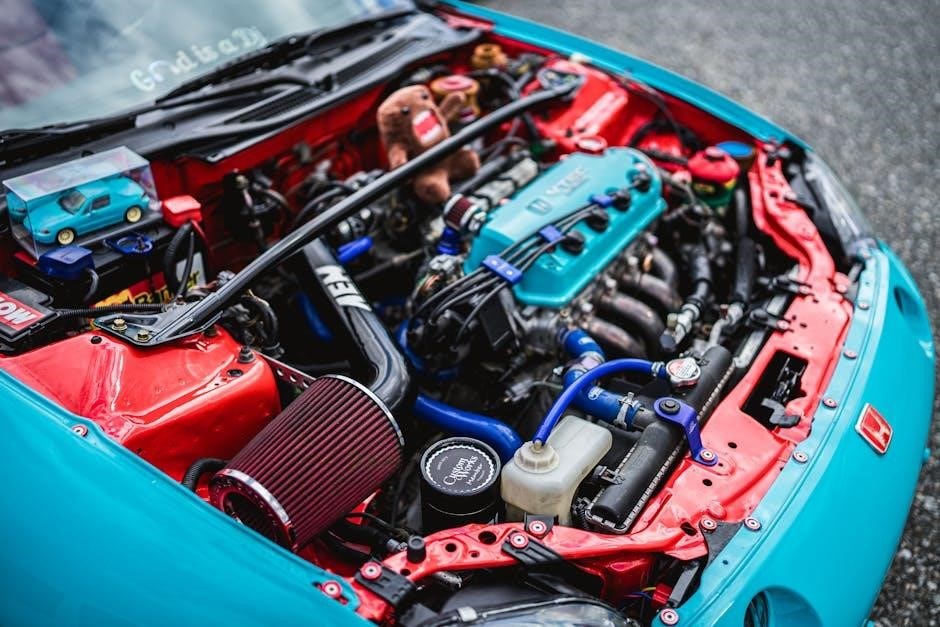
2.1 K-Series Engines (K20‚ K24)
K-Series engines‚ such as the K20 and K24‚ are highly sought after for Honda Civic swaps due to their high-revving capabilities and DOHC VTEC technology. The K20A2 and K24A2 variants are particularly popular‚ offering excellent power output and reliability. These engines are often sourced from models like the Civic Type R or Accord Euro R‚ making them a top choice for enthusiasts seeking increased performance and a more engaging driving experience. Proper installation requires specific mounts and wiring modifications.
2.2 B-Series Engines (B16‚ B18)
B-Series engines‚ including the B16A and B18C‚ are iconic for their VTEC performance and lightweight design. These engines are popular in Honda Civic swaps for their bolt-in compatibility with earlier models. The B16A offers rev-happy characteristics‚ while the B18C provides additional torque‚ making them ideal for enthusiasts seeking a balance of power and reliability. Their compact size and proven track record make B-Series swaps a timeless choice for Civic tuners worldwide.
2.3 D-Series Engines (D16‚ D17)
D-Series engines‚ such as the D16A6 and D17A1‚ are excellent starting points for Civic owners seeking reliability and moderate performance gains. The D16ZC with VTEC offers improved power at higher RPMs‚ while the D17 provides slightly more torque‚ making it suitable for daily driving. These engines are cost-effective and widely available‚ offering a straightforward swap for those new to engine modifications or seeking a balance between performance and practicality without major modifications.
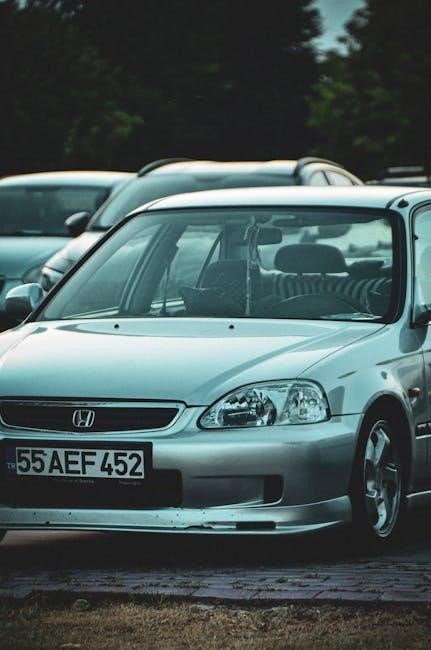
Preparation for the Engine Swap
Preparation involves assessing the vehicle’s condition‚ ensuring engine compatibility‚ and gathering necessary tools and materials. Proper planning is essential to avoid complications during the swap process.
3.1 Vehicle Inspection and Compatibility Check
Before starting‚ inspect your Honda Civic to ensure it’s mechanically sound; Check the chassis‚ suspension‚ and braking systems for any damage or wear. Verify that the donor engine and transmission are compatible with your Civic’s generation and model year. Compatibility issues can arise with wiring‚ mounts‚ and axles‚ so thorough research and planning are crucial to avoid costly setbacks during the swap.
3.2 Tools and Materials Needed
To perform a Honda Civic motor swap‚ you’ll need specialized tools like an engine hoist‚ socket set‚ wrenches‚ and screwdrivers. Essential materials include engine mounts‚ a wiring harness adapter‚ coolant hoses‚ and a fuel line kit. Additional items like gaskets‚ bolts‚ and seals are crucial for a leak-free installation. Labor costs and tuning tools should also be budgeted for‚ ensuring a smooth and successful engine swap process.
Engine Installation Process
Installing a new engine involves carefully aligning and securing it in the bay‚ reconnecting essential components like wiring‚ coolant‚ and fuel systems‚ and ensuring proper fitment for optimal performance and reliability.
4.1 Removing the Original Engine
Removing the original engine requires meticulous planning and execution. Start by disconnecting the battery and draining fluids. Label and disconnect electrical connectors‚ coolant hoses‚ and fuel lines. Remove engine mounts and any components obstructing access‚ such as the intake manifold or exhaust system. Finally‚ use a hoist or engine puller to carefully lift the engine out of the bay‚ ensuring no damage to surrounding parts or the chassis. Proper preparation prevents complications during the swap process.
4.2 Installing the New Engine
Installing the new engine begins with aligning it with the transmission and carefully lowering it into the bay using a hoist or engine puller. Secure the engine with mounts‚ ensuring proper alignment to avoid damage. Reconnect electrical connectors‚ fuel lines‚ and coolant hoses‚ following the reverse of the removal process. Double-check all connections for tightness and inspect for leaks. Proper installation ensures a smooth and successful engine swap‚ ready for the next steps of wiring and tuning.
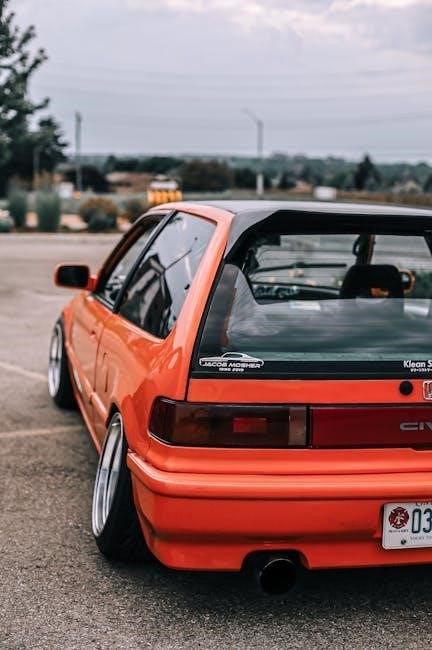
Wiring and Electronics Considerations
Wiring modifications are critical for engine swaps‚ requiring a custom harness to integrate the new engine’s components with the Civic’s ECU and electrical systems. ECU reprogramming ensures compatibility and optimal performance‚ while proper sensor and actuator connections prevent electrical failures. Challenges include compatibility issues and precise wiring for VTEC and fuel injection systems;
5.1 ECU Compatibility and Programming
ECU compatibility is crucial for a successful engine swap. The engine control unit must be reprogrammed to communicate with the new engine’s sensors and components. This involves updating the ECU’s software to match the engine’s specifications‚ ensuring proper fuel injection‚ ignition timing‚ and VTEC operation. Without proper programming‚ the engine may run inefficiently or not start at all. Tuning tools like Hondata’s S100 can help optimize performance.
5.2 Wiring Harness Modifications
Wiring harness modifications are essential to ensure compatibility between the new engine and the car’s electrical system. This involves adapting connectors‚ adding or removing sensors‚ and integrating the engine’s wiring into the Civic’s ECU. Properly routing and securing the harness prevents interference and damage. Using a pre-made swap harness or consulting a wiring diagram can simplify the process‚ ensuring all components communicate seamlessly for optimal performance and reliability.
Testing and Tuning
Testing and tuning are crucial to ensure the swapped engine runs smoothly. Initial start-ups involve checking for leaks and monitoring performance. Dyno tuning optimizes power and efficiency.
6.1 Initial Start-Up and Checks
After installing the new engine‚ the initial start-up requires careful attention. Ensure all connections are secure‚ fluids are filled‚ and electrical systems are functional. Start the engine and monitor for leaks‚ unusual noises‚ or warning lights. Allow the engine to idle and warm up before testing under load. This step ensures the swap was done correctly and identifies any immediate issues that need addressing.
6.2 Dyno Tuning and Performance Optimization
Dyno tuning is crucial for optimizing engine performance after a swap. A dynamometer measures power output‚ identifying areas for improvement. ECU calibration‚ fuel injection adjustments‚ and ignition timing fine-tuning are performed to maximize efficiency and power. This process ensures the engine operates smoothly‚ delivering peak performance while maintaining reliability. Professional tuners can tailor settings to specific needs‚ such as track use or daily driving‚ enhancing overall drivability and responsiveness.
Cost Estimation and Budgeting
Planning a motor swap requires budgeting for engine‚ transmission‚ and labor costs. Prices vary based on engine choice‚ transmission type‚ and labor expertise required.
7.1 Engine and Transmission Costs
Engine costs vary widely depending on the model and condition. A used K-Series engine can range from $1‚500 to $4‚000‚ while a B-Series engine may cost between $1‚000 and $3‚000. Transmission costs typically range from $500 to $2‚000‚ depending on type and condition. These figures are based on current market trends and availability of parts.
7.2 Additional Parts and Labor Expenses
Beyond the engine and transmission‚ additional parts like engine mounts‚ wiring harnesses‚ and ECU can add $1‚000 to $3‚000. Labor costs vary by shop‚ ranging from $2‚000 to $5‚000 for the swap. These expenses are essential for a successful swap‚ ensuring compatibility and optimal performance. Proper planning and budgeting are crucial to avoid unexpected costs during the process.
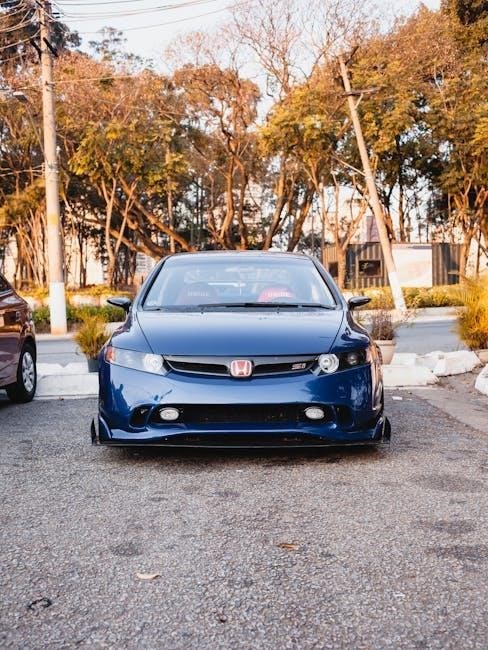
Community Resources and Support
Online forums and communities provide valuable knowledge and troubleshooting tips. Local tuning shops and specialists offer hands-on expertise and customized solutions for your swap needs.
8.1 Online Forums and Communities
Online forums and communities like HondaSwap and A4H-TECH.COM offer extensive guides‚ troubleshooting tips‚ and expert advice for Honda Civic engine swaps. Enthusiasts share detailed step-by-step instructions‚ part recommendations‚ and real-world experiences. These platforms are invaluable for resolving common issues and optimizing swaps‚ whether you’re installing a K20‚ B16‚ or other engines. Active discussions and shared knowledge help streamline the process‚ making complex modifications more accessible for DIYers and professionals alike.
8.2 Local Tuning Shops and Specialists
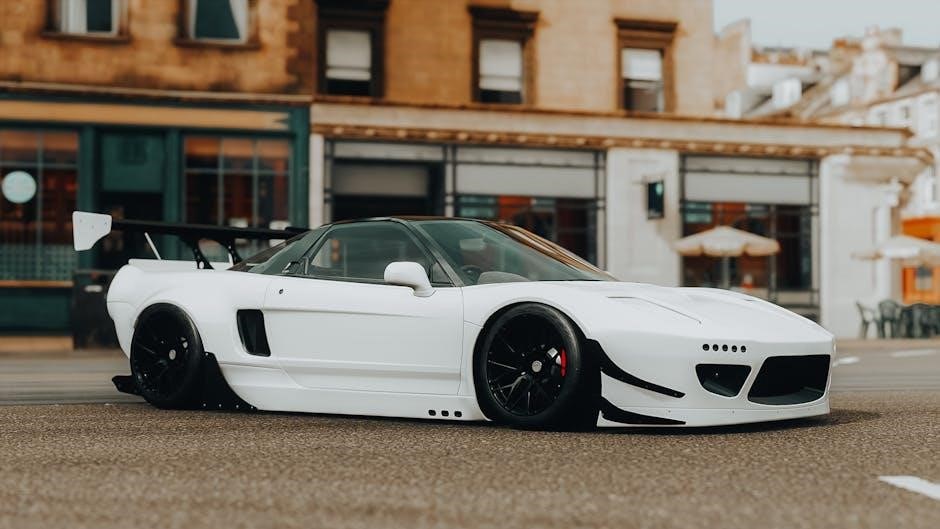
Local tuning shops and specialists provide hands-on expertise for Honda Civic engine swaps‚ offering custom solutions and tailored advice. Shops like GRacing and A4H-TECH.COM specialize in swap packages‚ mounts‚ and performance optimization. Their experience with K-Series‚ B-Series‚ and D-Series engines ensures a smooth transition. Consulting local experts can save time and prevent costly mistakes‚ making them invaluable resources for both novice and experienced enthusiasts.
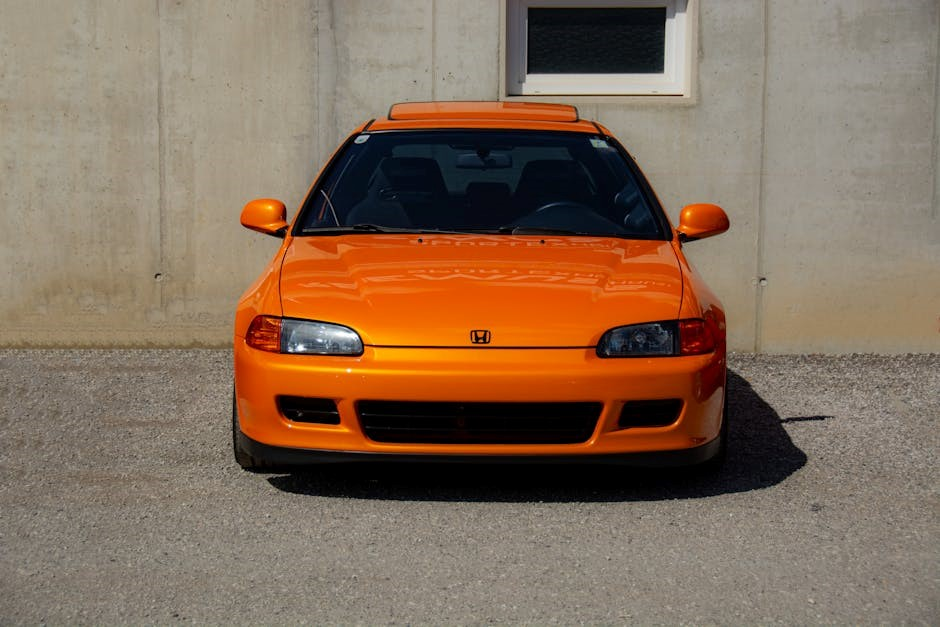
Case Studies and Success Stories
Case studies highlight successful Honda Civic engine swaps‚ such as K20Z1 and K20 VTEC installations‚ showcasing improved performance and reliability. These real-world examples inspire enthusiasts and demonstrate achievable results through proper planning and execution.
9.1 Successful K-Series Swaps
K-Series engine swaps‚ such as the K20Z1 and K20A‚ have proven highly successful in Honda Civics‚ offering significant horsepower and torque gains. These engines‚ often sourced from RSX Type-S or EP3 models‚ deliver improved performance and reliability. Proper modifications‚ including engine mounts and wiring harness adjustments‚ ensure seamless integration. Enthusiasts often highlight the K-Series for its VTEC capabilities and tunability‚ making it a popular choice for achieving enhanced power while maintaining drivability. These swaps have become iconic in Honda tuning culture‚ inspiring countless builds and showcasing the Civic’s potential.
9.2 B-Series Swap Examples
B-Series engines‚ particularly the B16A and B18C‚ are renowned for their high-revving capabilities and VTEC performance. Swapping these into Civics‚ especially earlier models‚ has become a classic modification. Owners often pair these engines with performance parts like intake systems and exhausts to maximize power. The B-Series’ reliability and tuning potential make it a favorite among enthusiasts‚ with many showcasing successful swaps that enhance both speed and agility‚ embodying the spirit of Honda’s performance heritage. Community support and detailed guides further simplify the process for aspiring tuners.